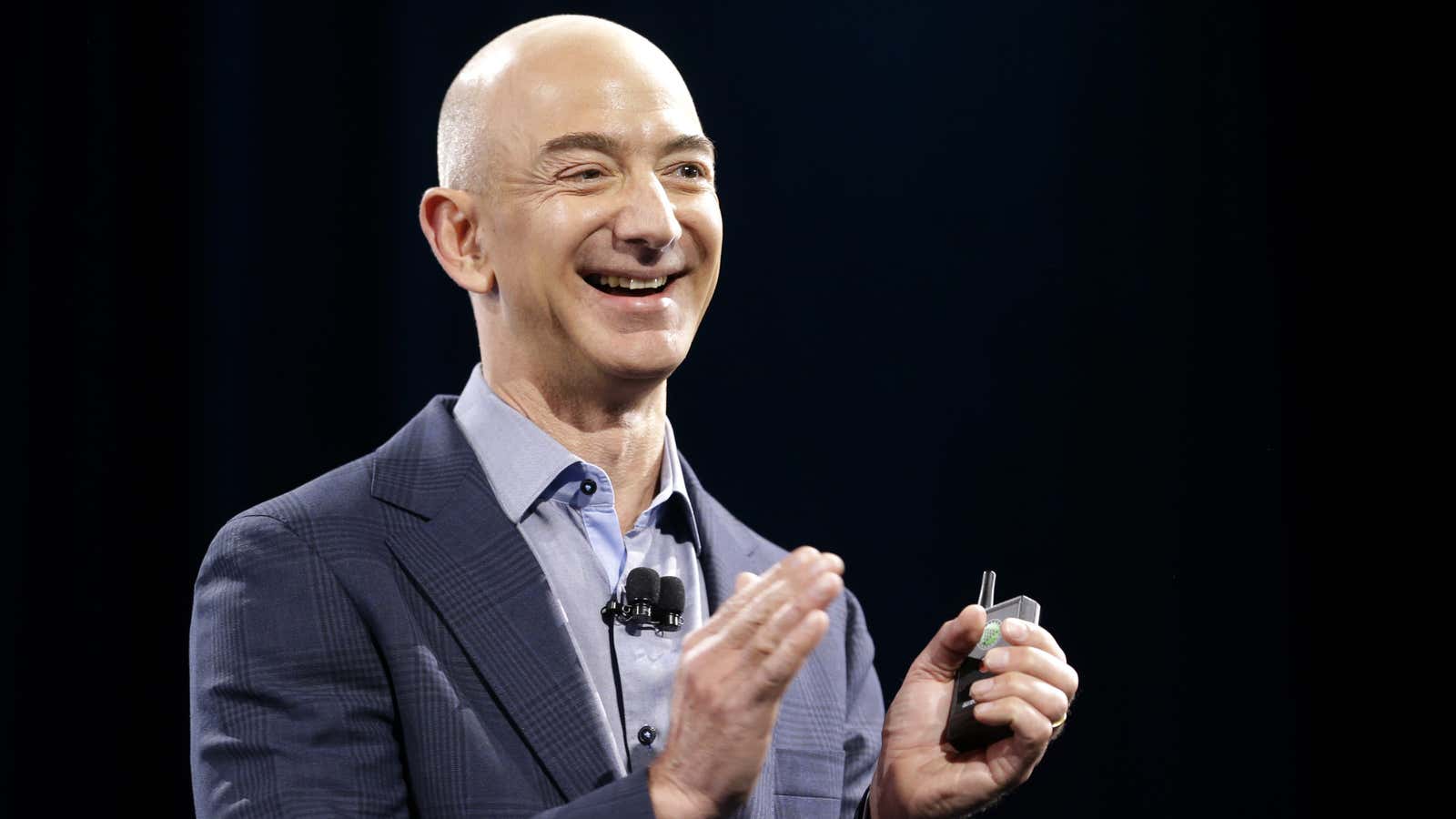Amazon’s paltry second-quarter earnings made one thing clear: profits don’t matter.
The online retail giant made $197 million in profit in the three months to June, it reported yesterday, badly missing expectations—it made $857 million in the same period last year. But investors shrugged, with Amazon’s shares trading flat for the week. After all, in Amazon’s 20-plus years of history, regular profits have only been a feature in the past two years. In other words, if this marks a return to razor-thin margins—a mere 0.5% net margin in the second quarter—it won’t stop the company’s steady march to global domination, disrupting a wide range of industries in the process.
It all started, of course, with books. It didn’t take long for Amazon to vanquish bricks-and-mortar rivals, with aggressive pricing and a focus on growth over profitability.
As Amazon shifted from selling books to flogging just about anything you can think of, it started to resemble a massive online department store. The woes of the general merchandise retail sector are now well documented, with Amazon a primary culprit. Still, over the past 20 years, Macy’s has made more than twice as much money as Amazon (adjusted for inflation). No matter—Macy’s is in the process of closing 100 stores.
Amazon has a much longer way to go before it catches up to Walmart and other mega-retailers in terms of profits.
But so what? Amazon’s ambition and growth potential have led investors to value the company at nearly $500 billion, as much as many of its closest competitors combined. Billionaire founder Jeff Bezos was briefly the richest person in the world this week.
Bezos never promised investors that bumper profits would feature in Amazon’s grand vision. When the company was preparing to go public in 1997, the filing said:
The Company believes that it will continue to incur substantial operating losses for the foreseeable future, and that the rate at which such losses will be incurred will increase significantly from current levels. Although the Company has experienced significant revenue growth in recent periods, such growth rates are not sustainable and will decrease in the future.
The company has since turned big losses into small profits, as revenue has consistently recorded extraordinary rates of growth—more than 20% a quarter in the past couple of years—for such a large company.
